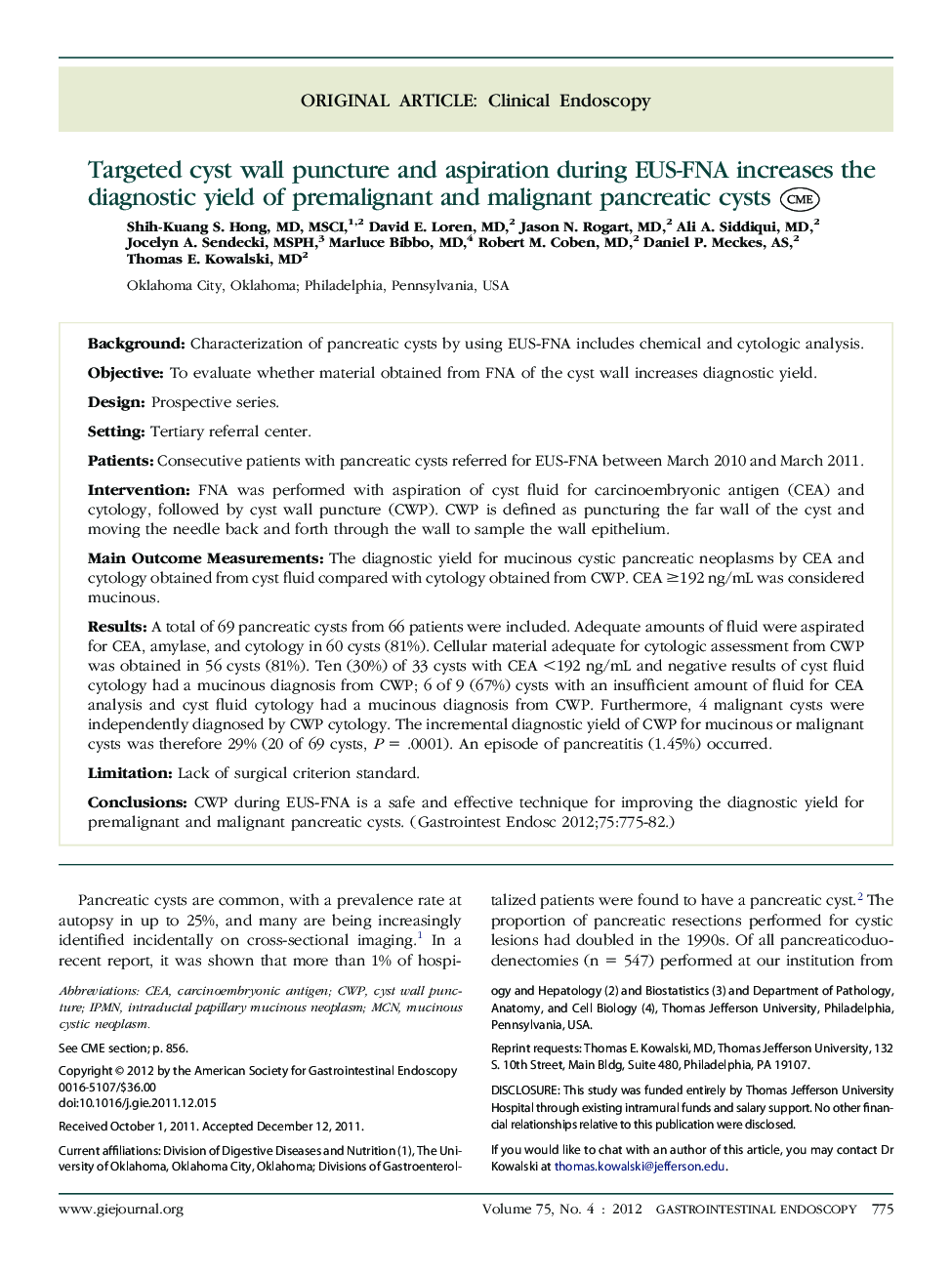| Article ID | Journal | Published Year | Pages | File Type |
|---|---|---|---|---|
| 3305116 | Gastrointestinal Endoscopy | 2012 | 8 Pages |
BackgroundCharacterization of pancreatic cysts by using EUS-FNA includes chemical and cytologic analysis.ObjectiveTo evaluate whether material obtained from FNA of the cyst wall increases diagnostic yield.DesignProspective series.SettingTertiary referral center.PatientsConsecutive patients with pancreatic cysts referred for EUS-FNA between March 2010 and March 2011.InterventionFNA was performed with aspiration of cyst fluid for carcinoembryonic antigen (CEA) and cytology, followed by cyst wall puncture (CWP). CWP is defined as puncturing the far wall of the cyst and moving the needle back and forth through the wall to sample the wall epithelium.Main Outcome MeasurementsThe diagnostic yield for mucinous cystic pancreatic neoplasms by CEA and cytology obtained from cyst fluid compared with cytology obtained from CWP. CEA ≥192 ng/mL was considered mucinous.ResultsA total of 69 pancreatic cysts from 66 patients were included. Adequate amounts of fluid were aspirated for CEA, amylase, and cytology in 60 cysts (81%). Cellular material adequate for cytologic assessment from CWP was obtained in 56 cysts (81%). Ten (30%) of 33 cysts with CEA <192 ng/mL and negative results of cyst fluid cytology had a mucinous diagnosis from CWP; 6 of 9 (67%) cysts with an insufficient amount of fluid for CEA analysis and cyst fluid cytology had a mucinous diagnosis from CWP. Furthermore, 4 malignant cysts were independently diagnosed by CWP cytology. The incremental diagnostic yield of CWP for mucinous or malignant cysts was therefore 29% (20 of 69 cysts, P = .0001). An episode of pancreatitis (1.45%) occurred.LimitationLack of surgical criterion standard.ConclusionsCWP during EUS-FNA is a safe and effective technique for improving the diagnostic yield for premalignant and malignant pancreatic cysts.
